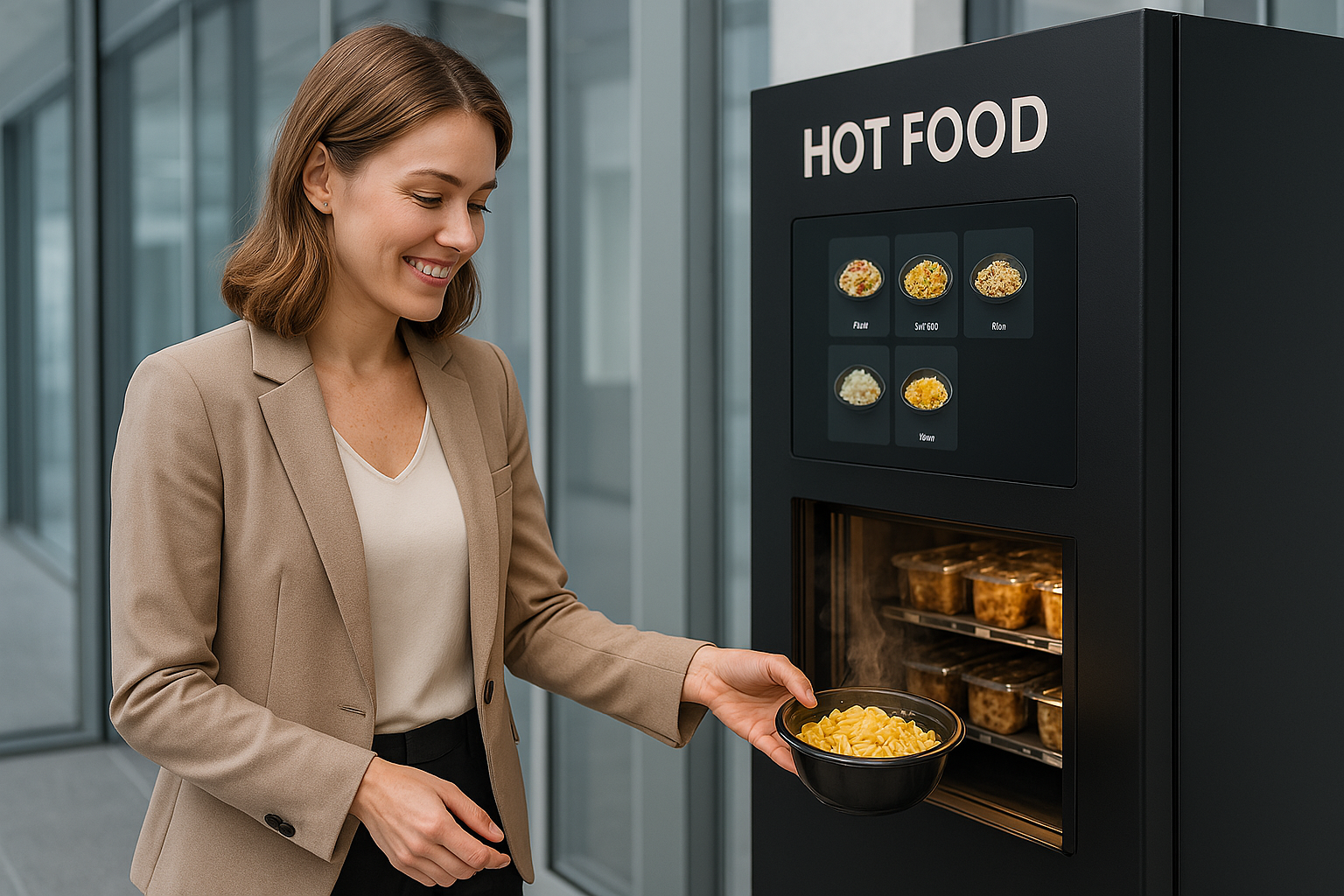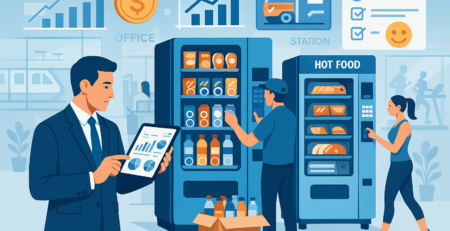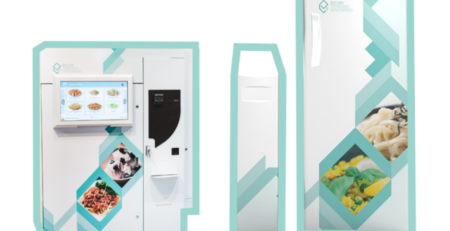Complete Guide to Food Vending: The Global Sector of Food Vending Machines
What is Food Vending?
Food vending is the automatic sale of food and beverages through self-service machines. It’s a sector that, globally, is worth over 30 billion dollars and continues to grow thanks to technology, demand for quick solutions, and expansion in emerging markets.
Global market data:
- Global value (2023): over 30 billion USD
- 2030 forecasts: exceeding 50 billion USD
- Asia-Pacific: fastest growing region
- USA and Japan: the two most developed markets
- Europe: strong expansion in healthy and foodtech segments
Types of Vending Machines Worldwide
1. Snack and beverage machines
Widespread everywhere, from New York to Tokyo. They offer packaged products, drinks, and quick snacks.
2. Hot food machines
Increasingly present in airports, offices, and hotels. In Japan and Korea, they are even equipped with induction ovens and cooking robots.
3. Healthy vending
In the USA and Europe, vending machines with healthy, vegan, organic, and functional products (protein, sugar-free, etc.) are growing.
4. Refrigerated and frozen machines
Very common in Asia for ready meals, ice cream, and takeaway dishes in frozen versions.
5. Smart and gourmet machines
In China and the United Arab Emirates, we find robotized vending machines that serve sushi, noodles, gourmet dishes, specialty coffee, or even cocktails.
Why Invest in Food Vending Globally
Advantages for businesses:
- 24/7 accessible service for customers and employees
- No staff required
- Reduction of fixed costs for traditional food service
Advantages for those wanting to start a business:
- Replicable business anywhere in the world
- Constant growth of the vending market
- Total flexibility: a kiosk, a network, or just one machine
How to Start a Vending Business in the International Market
1. Choose the market and audience
Analyze country by country:
- In Asia, hot and smart food predominates
- In North America, great attention to healthy food
- In Europe, snack/coffee combinations + hot meals
2. Choose the strategic location
Top global locations:
- Office skyscrapers (e.g., New York, Dubai)
- University campuses
- Airports and stations
- Industrial areas
- Condominiums and coworking spaces
3. Purchase or lease the machines?
- Purchase: more control and margin
- Leasing: simpler in the initial phase, with assistance and maintenance
4. Logistics and maintenance management
Essential to choose a system with:
- Remote management
- Digital payments
- AI statistics and analysis
Focus: Hot Meal Vending Machines Worldwide
Hot food vending machines are conquering the global market, particularly in Asia and North America.
Examples of products:
- Japan: ramen, curry rice, tempura
- USA: mac & cheese, burritos, fried chicken
- France: croque monsieur, quiche, soups
- Germany: currywurst and hot soups
Advanced technologies:
- Hot air ovens
- Smart microwaves
- Face scanning and mobile payment systems
- Apps for meal reservations and configuration
Global Vending Innovations
- Smart payments: NFC, QR code, Apple Pay, crypto wallet
- Cloud management: remote control from smartphone
- Machine learning: to optimize sales and supplies
- Robotic vending: as in China, where robotic arms prepare and serve meals
Global Regulations: What to Consider
Regulations change from country to country, but the basic principles are similar:
Common requirements:
- Local health and food regulations
- Customs registrations for machinery import/export
- Tax obligations for POS and traceability
Suggestion:
Consult a local consultant for each foreign market in which you want to operate.
Profitability of the Vending Business Worldwide
Initial investment:
- Basic machine: $3,000 – $10,000
- Gourmet or robotized machine: up to $30,000
- Location, transport, installation: variables based on the country
Operating costs:
- Energy (higher in Northern Europe, lower in Asia)
- Resupply (depends on logistics chain)
- Technical assistance (in-house or third-party)
Revenue and margins:
- Average margin: 40-60%
- ROI in 12-24 months
- Monthly revenue per machine: from $500 to over $3,000 in top locations
International Success Stories
🇯🇵 Japan:
Over 5 million active vending machines, including vending for complete meals, umbrellas, flowers, and clothing.
🇺🇸 USA:
Boom of startups in the healthy and smart vending segment: machines with AI and app reservations.
🇨🇳 China:
Vending machines are an integral part of smart cities, with gourmet services, kitchen robots, and facial payment.
🇫🇷 Europe:
France, Germany, and Spain focus on automatic vending of local dishes and high-quality products.
Frequently Asked Questions (FAQ)
Which countries offer the best opportunities in food vending?
China, Japan, United States, and Gulf countries are expanding rapidly.
What margins does food vending have?
On average 40-60%, with ROI that can arrive in a year if well positioned.
Do I need a license to sell in another country?
Yes, each country has specific regulations on food and commerce. It’s essential to get local information.
Is hot food vending really safe?
Yes, if the machines comply with health standards and are remotely monitored.
Conclusion: Why Invest in Global Food Vending
Global food vending is one of the most dynamic, accessible, and innovative forms of retail. From automatic breakfast in London, to hot ramen in Tokyo, to smart salads in San Francisco, vending is everywhere.
With the right technologies and strategies, you can start a business that is:
- Flexible
- Scalable
- Automatic
- Highly profitable





